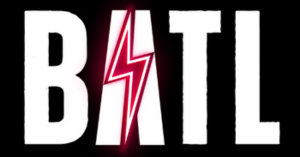Unless you’ve been living under a rock for your entire life, you are likely familiar with the axe.
Also spelt, ax, axes are hand tools used for chopping, splitting, piercing, and much much more. The most rudimentary axes(consisting of simple stone implements with wooden handles) date back to the stone ages – about 30,000 BC.
The development of the iron-bladed felling axe in the Middle Ages made possible the vast forest clearance of northwestern Europe and the development of medieval agriculture. The axe played a similar role in land clearance in eastern Europe, Scandinavia, North and South America, and elsewhere.
In modern times the ax, now with a blade or bit of steel, sometimes double-bitted or sharpened on both ends, has lost much of its historic role to powered saws and other machinery, although it remains a widely used tool with a wide variety of uses – like axe throwing for example.
Before getting involved in our urban sport of axe throwing, it’s always a good idea to get familiar with your tools. So, don’t know the first thing about what separates a hatchet from a felling axe?
Not to worry, BATL Axe Throwing has you covered.

DIFFERENT TYPES OF AXES
HATCHETS
Hatches (also known as scout axes) are small axes designed to be used with one hand while the other holds the wood in place. On top of being the perfect throwing axe, they are useful for making rough cuts in relatively small logs. In other words, they do a good job cutting up branches for firewood but are way undersized for cutting down large trees. They have axeheads which weigh about a pound and a half, with the handle being about a foot long. Hatchets can be used to cut across the grain or along the grain, but if you have to cut through more than a couple of inches, look for another axe.
The best value hatchet you can purchase directly through us via our web store. The hatchet is great for a bug out bag and hikers and campers that don’t want to carry much weight. It gives you the benefit of being able to chop wood easier than using a big knife or machete but doesn’t weigh all that much.
FELLING AXES
If you’ve spent time around the BATL Axe Throwing, then you’ve probably heard the term big axe. That’s our way of simplifying things, as a big axe is really just what we call a felling axe. If you really do need to cut down a tree and don’t have access to a chainsaw, the felling axe is the one you should use. The felling axe can also be referred to as any type of camp axe and are used for chopping down trees and branches. There are two distinguishing features about this type of axe: the handle of the axe is about two feet long, and the head weighs about two and a half pounds. The blade is thin, flat and sharp. The felling axe is swung sideways at the tree and is designed to cut through the grain, not with the grain like a maul.
SPLITTING MAUL
Most of us don’t chop down trees, but splitting firewood is a chore many do. The splitting maul is the axe of choice for that job. The head of a splitting maul is thick and heavy. It can weigh as much as twelve pounds but must are nowhere near this weight. The splitting maul is swung down at the log in the direction of the grain. The weight helps force it through the wood and the thickness of the axe head keeps it from getting stuck. Being a tool made for brute force, it’s not necessary for a splitting maul to be sharp.
TOMAHAWKS
While tomahawks are known as the original throwing axe, what many don’t realize is that tomahawks aren’t the best for camp. They can be used to some degree, but the axe head is too light for chopping into the wood. Due to the light weight of the tomahawk, BATL advises against using these for throwing, as they can be more unpredictable than a hatchet.
DOUBLE BIT AXE
The double bit axe is the quintessential Paul Bunyan Axe. Today, few such axes are used for real work, but they are still commonly used for throwing in things such as Lumberjack Games. Players hold the axe behind their heads with both hands and as they bring it over their heads, release it towards a target, hoping the axe will hit and stick into the target. One of the blades is usually sharp for cutting against the grain (chopping branches or trees) and the other isn’t as sharp and is better suited to splitting wood along the grain (like a splitting axe).
No matter what your task and what axe you choose for the job, remember to stay safe and use caution.
